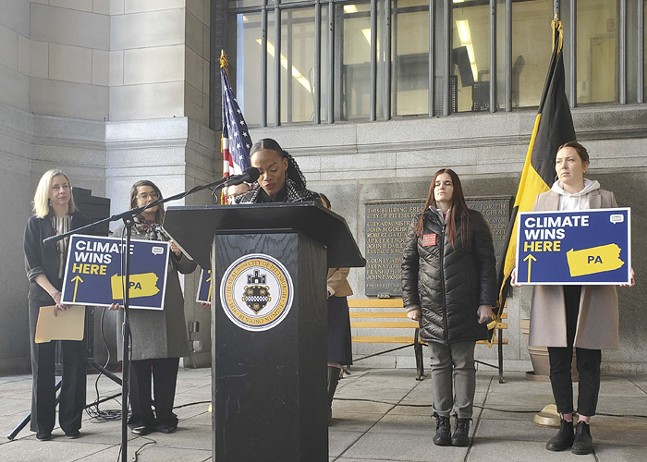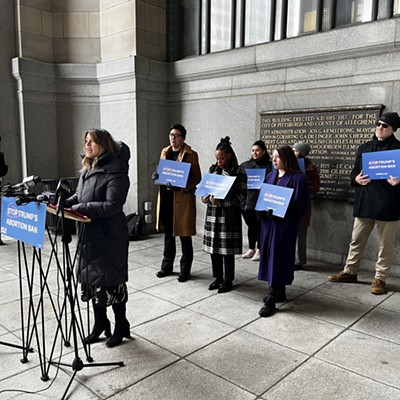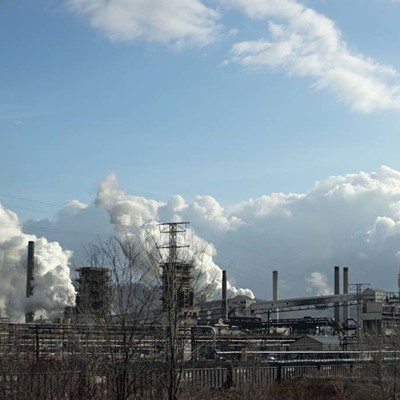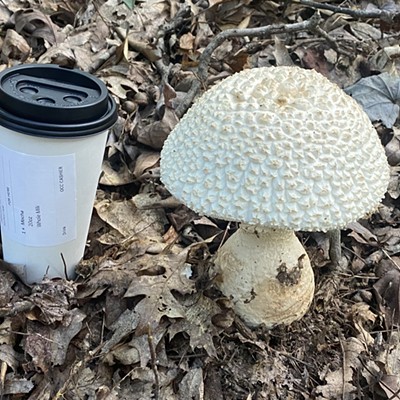
Patrick Campbell says his organization is regularly bombarded by messages from concerned residents waking up to unexplained industrial odors.
“In these messages, they often ask ‘what stinks and where is the stench coming from?’” Campbell, executive director of Group Against Smog and Pollution, said during a March 16 press conference atop the City-Council Building portico.
Campbell and six others sharing the podium hope a recent injection of federal funding earmarked for air monitors will give communities a fuller sense of what’s in the air they’re breathing on any given day. The data generated by monitors can then be used to press regulatory agencies for effective enforcement, they say.
“It is within the ability of governments and government agencies like the EPA to adopt policies that prevent premature deaths and decrease the health impacts caused or exacerbated by pollution,” said Alison Steele, executive director for the Environmental Health Project. “Policymakers can save lives and promote healthier families.”
In an effort to stimulate investment in air quality monitoring, the United States Environmental Protection Agency recently allocated $53 million to local environmental organizations across the country. Of this, nearly $2 million was awarded to projects in Western Pennsylvania.
Advocates say regulating agencies like the Allegheny County Health Department and the Pennsylvania Department of Environmental Projection often lack the resources to effectively monitor and regulate the range of industrial polluters spanning Western Pennsylvania.
The region has long been identified as a coal, coke, and steel producer, but regulators have struggled to keep up with new monitoring and enforcement challenges raised by the fracking industry and related petrochemical operations. The recent EPA grant rollout reflects the increasing role played by community-led air monitoring groups.
“Pittsburgh has the drive to do better, but we have limited jurisdictional power,” said Pittsburgh Councilmember Erika Strassburger. “Allegheny County, while it's larger and it has a health department that can address air quality, is limited geographically... So it's imperative that we all partner with multiple levels of government and advocates to bring both the funding and the solutions back home that can be implemented by the folks on the ground.”
GASP plans to use the $500,000 federal grant it received from the EPA to expand its community air-monitoring networks in the Mon Valley, Pittsburgh’s Uptown neighborhood, and the Neville Island industrial corridor stretching for several miles Northwest of the city. The money will fund private monitors operated by volunteers and special canisters that sample air during a blatant pollution episode and give a detailed breakdown of the captured emissions.
GASP is also one of several local groups that helped create SmellPittsburgh, a free smartphone app that collates data about industrial smells given by residents across the city. More than 70,000 complaints have been logged since its launch in 2016.
Reports based on this data are regularly turned over to the health department to assist their work enforcing polluters. The health department operates air monitors in eight locations but these, advocates say, are mostly too diffuse to give detailed information about emissions produced by any given polluter.
Other grant recipients, including the Fractracker Alliance and the Community Foundation of the Alleghenies, are rolling out their own community air monitoring projects with the funds.
U.S. Rep. Summer Lee (D-12) said the EPA will devote an additional $236 million from the 2022 Inflation Reduction Act to air monitoring projects in the coming years.
“Now that this law has been passed, we're laser-focused on fighting to make sure western Pennsylvania receives as much of that funding for grants projects and programs as possible because our economy and our pocketbooks depend on it,” Lee said.
"Pennsylvania families and businesses need to know how they can benefit from these investments that will improve our air quality, lower those energy bills, spur Pennsylvania's clean energy economy, mitigate extreme weather events, and boost Pittsburgh's climate resiliency."


















